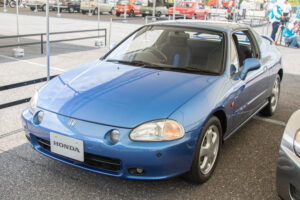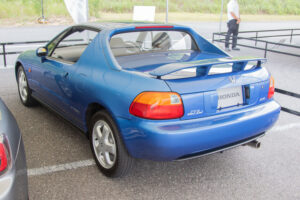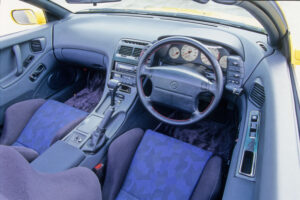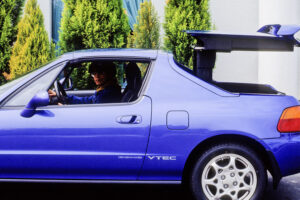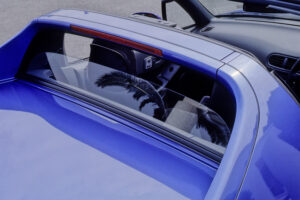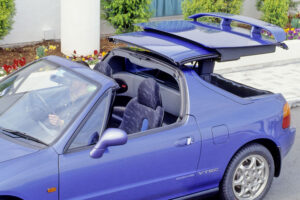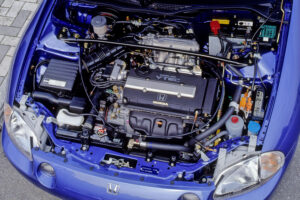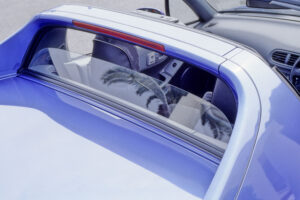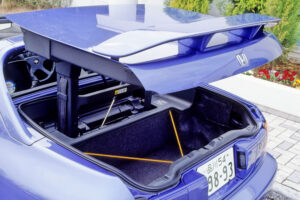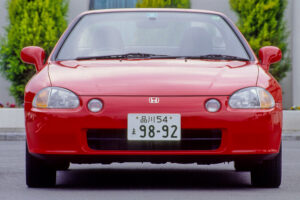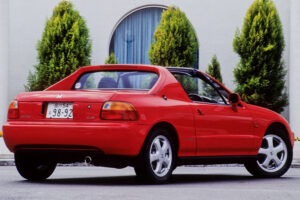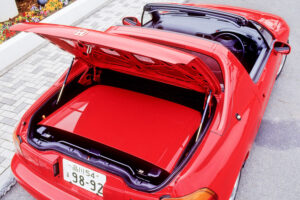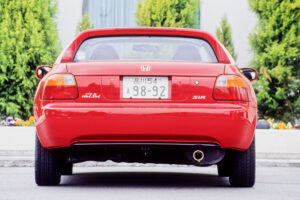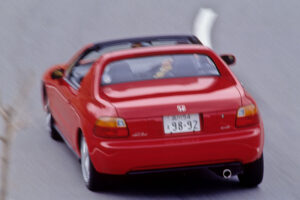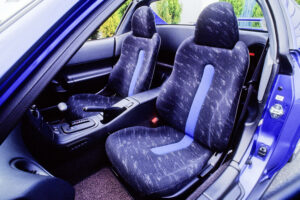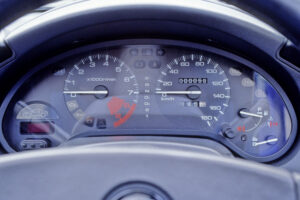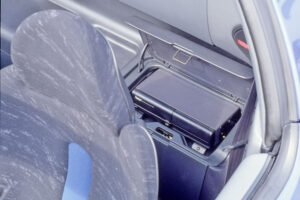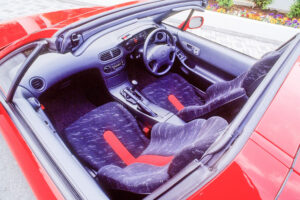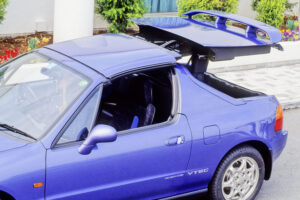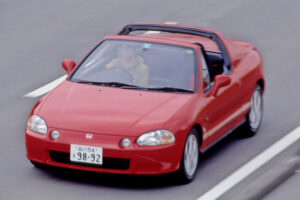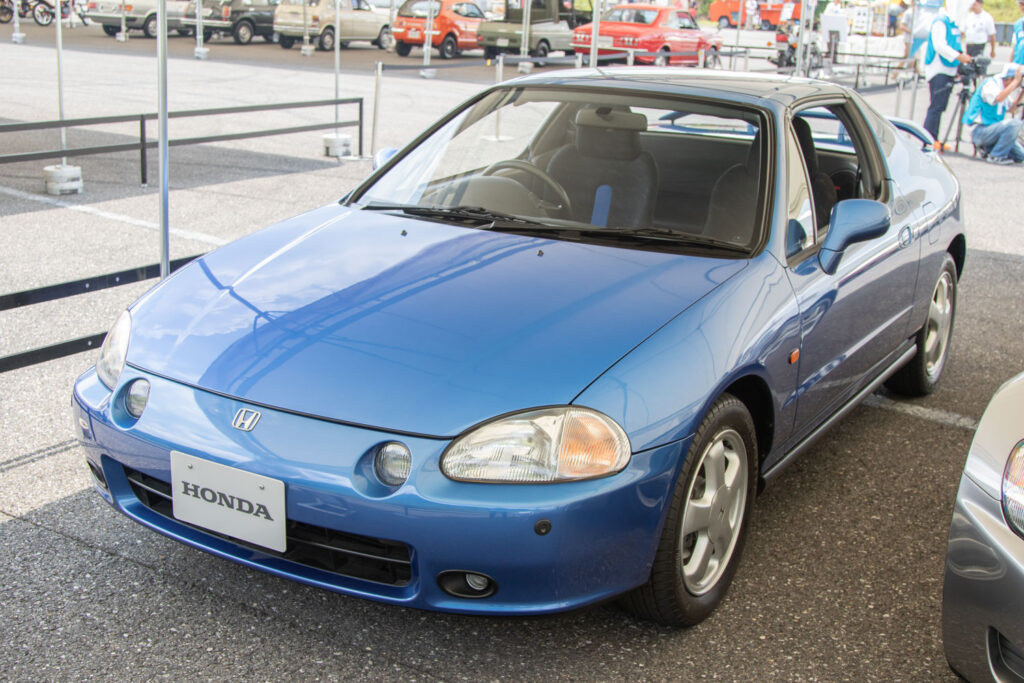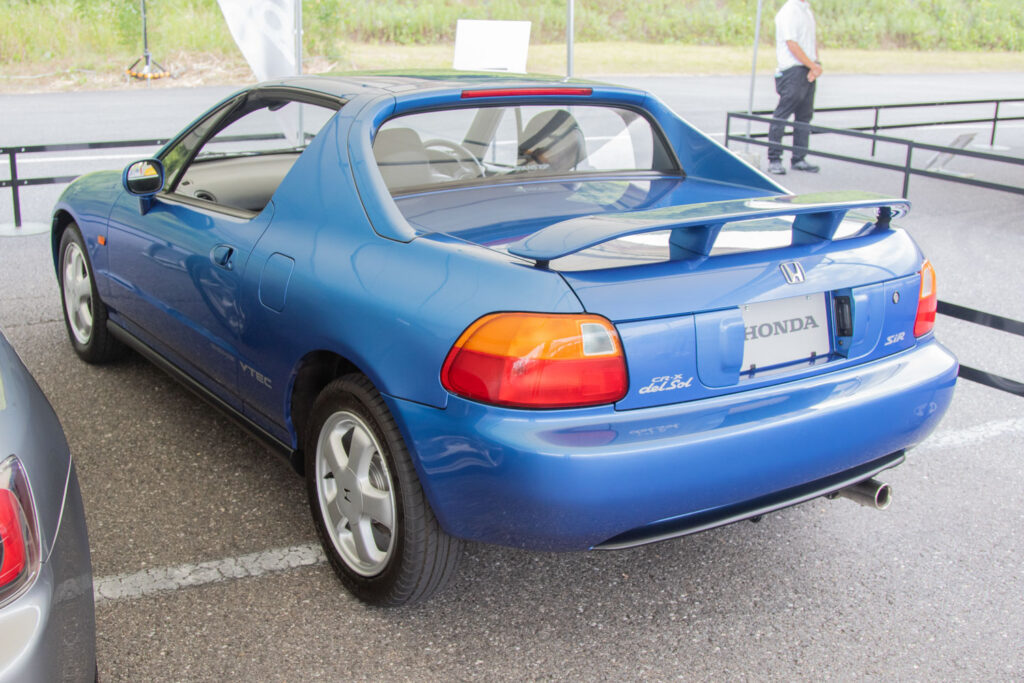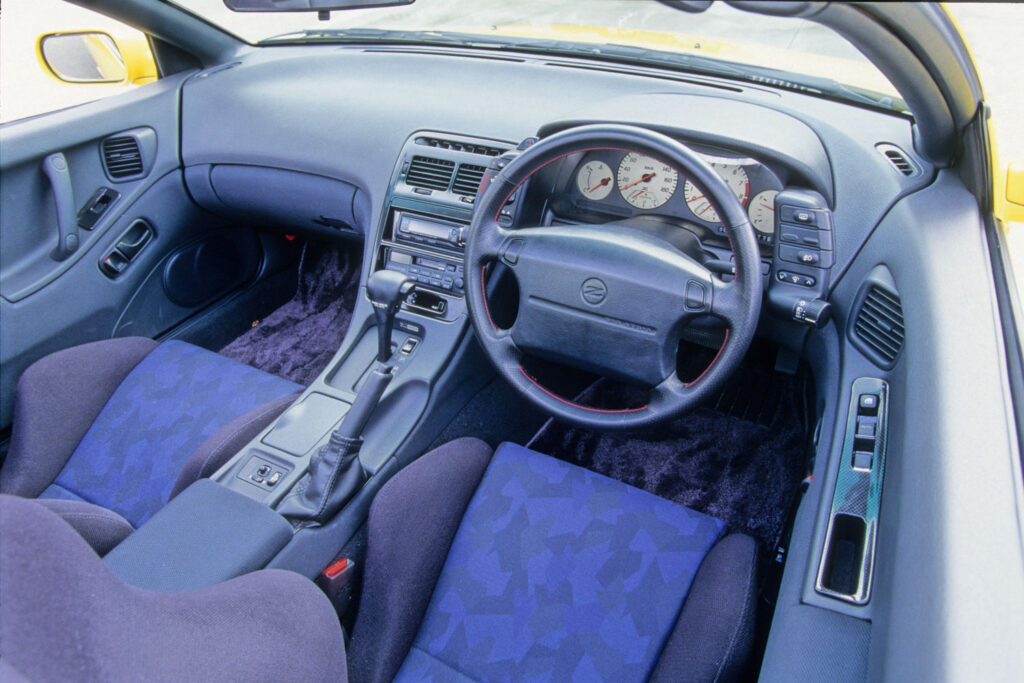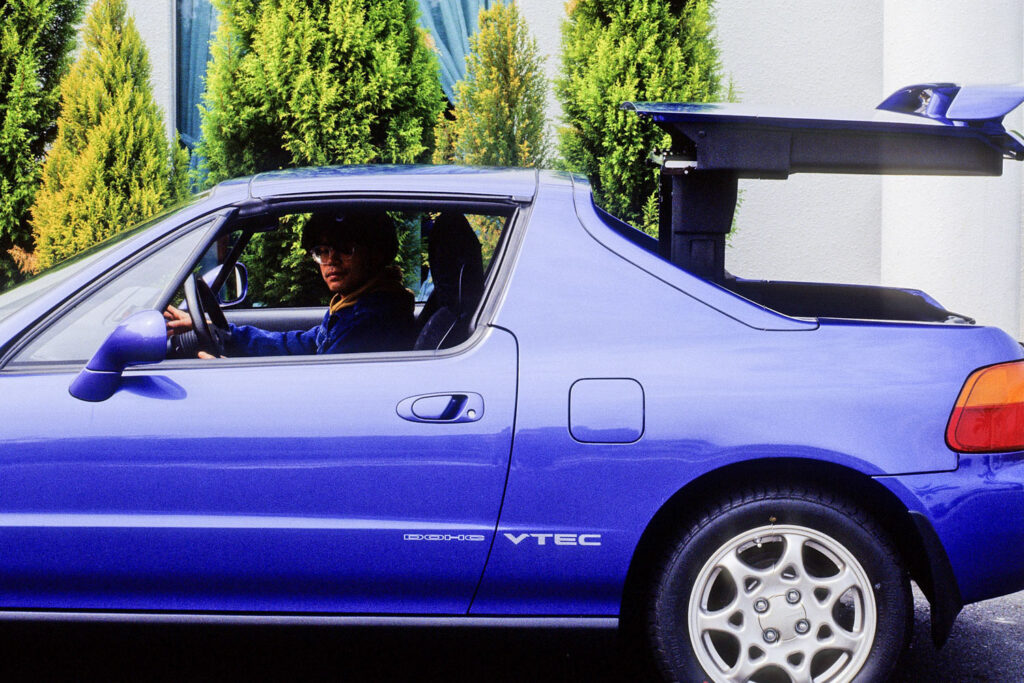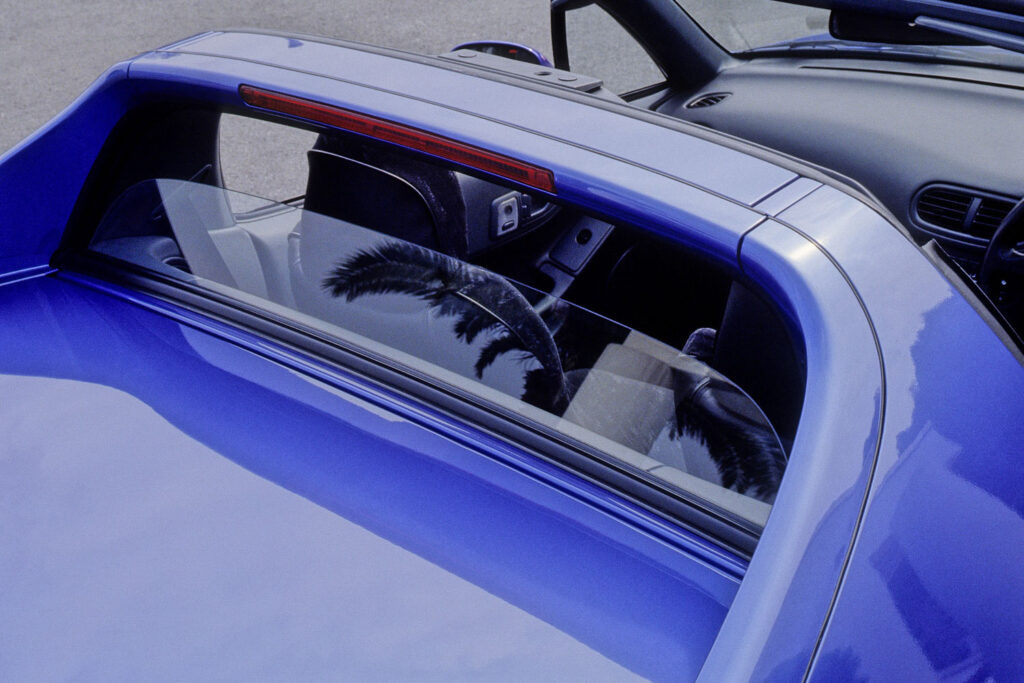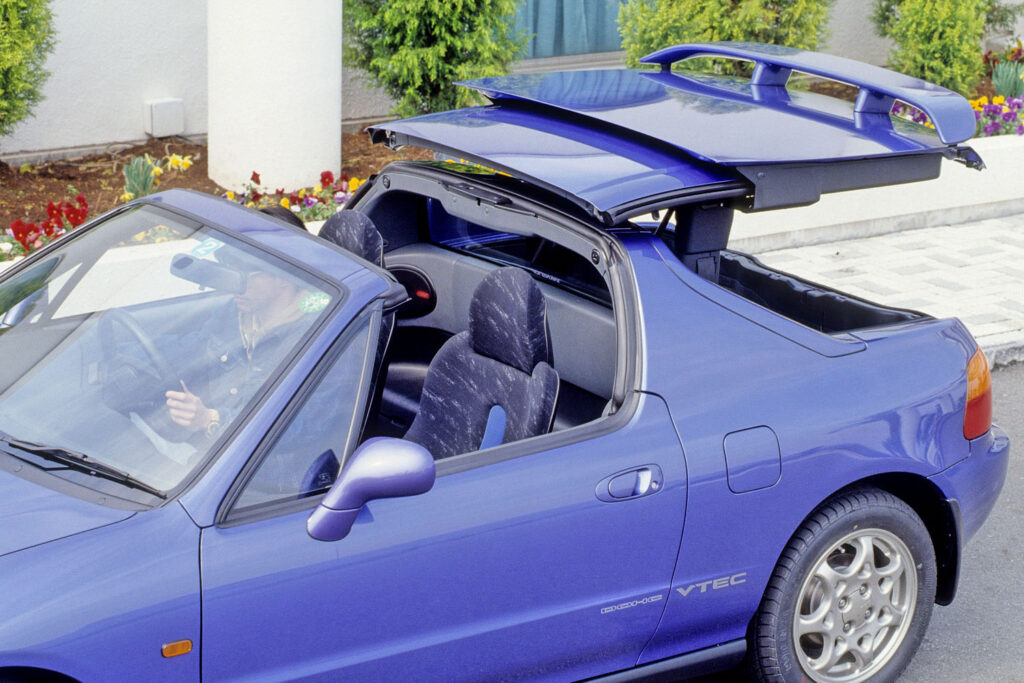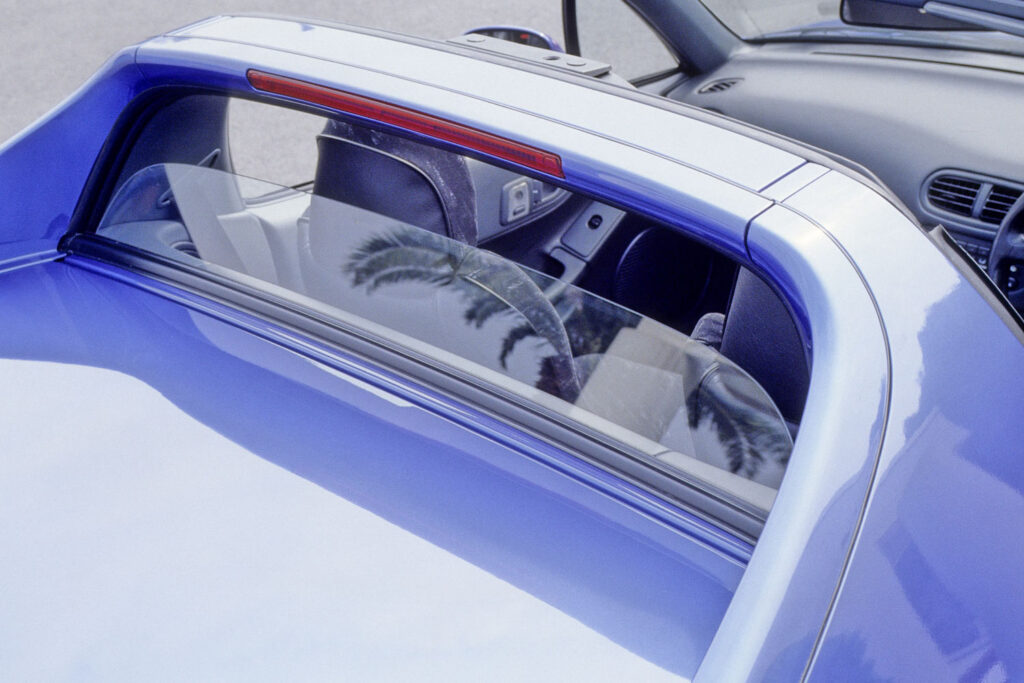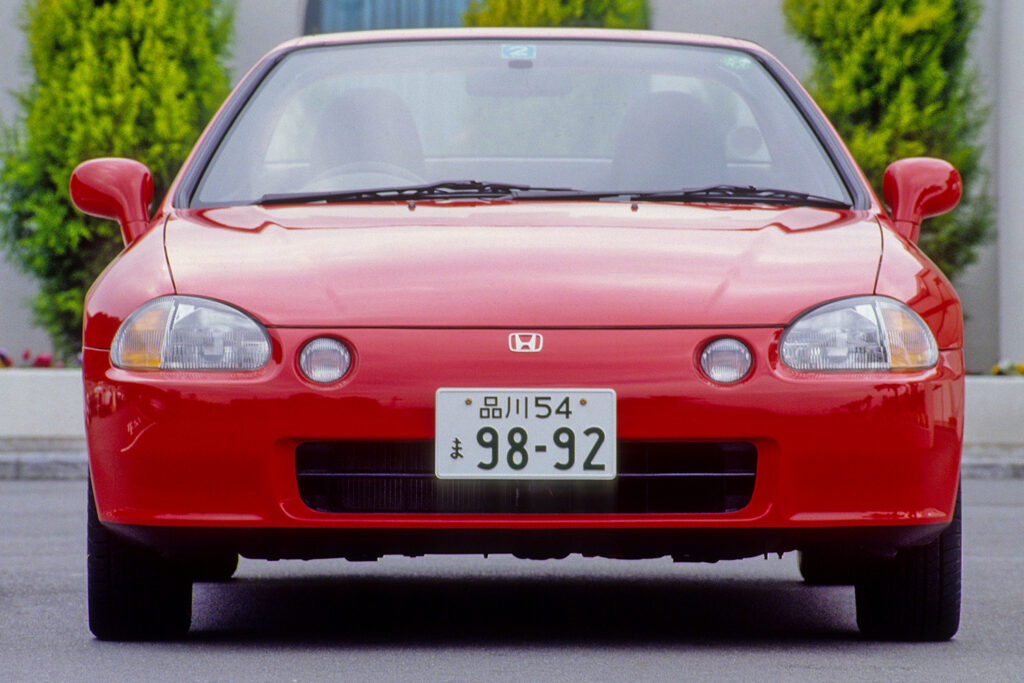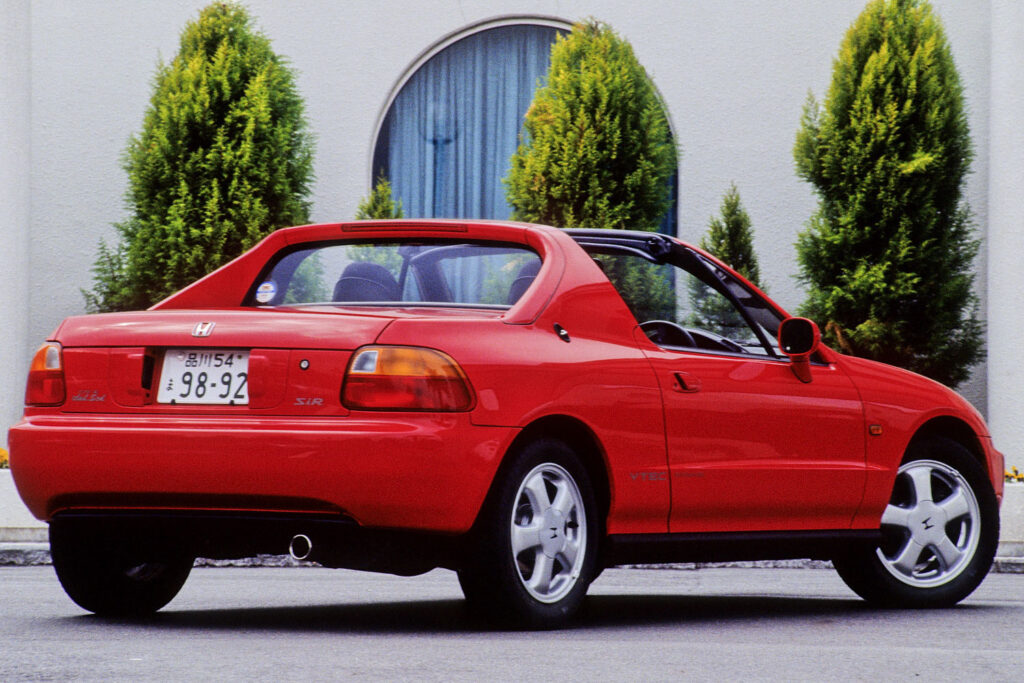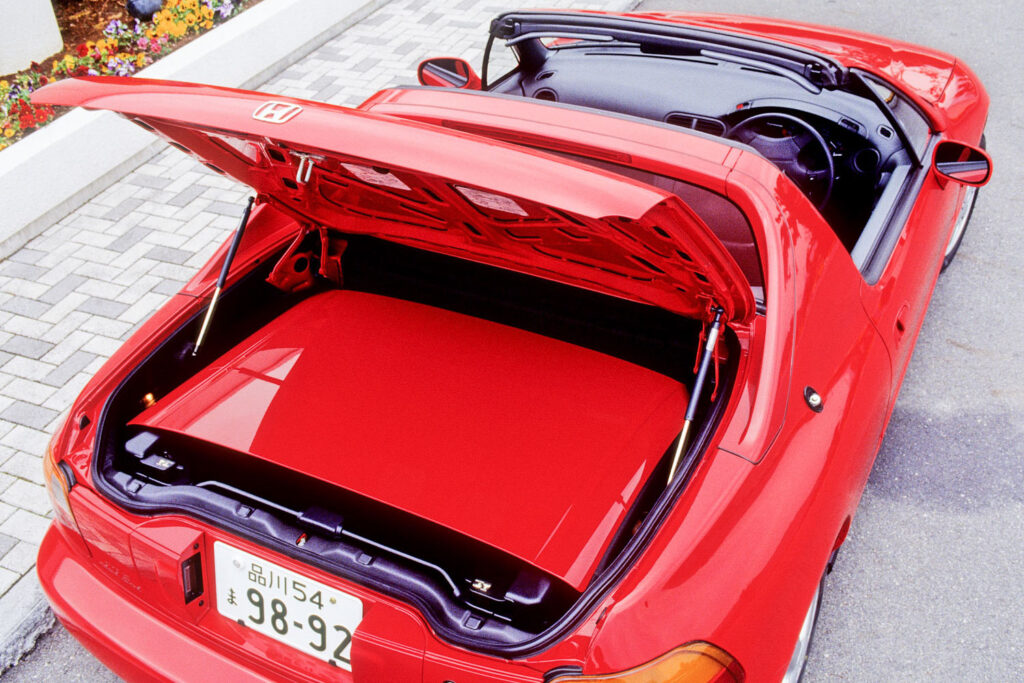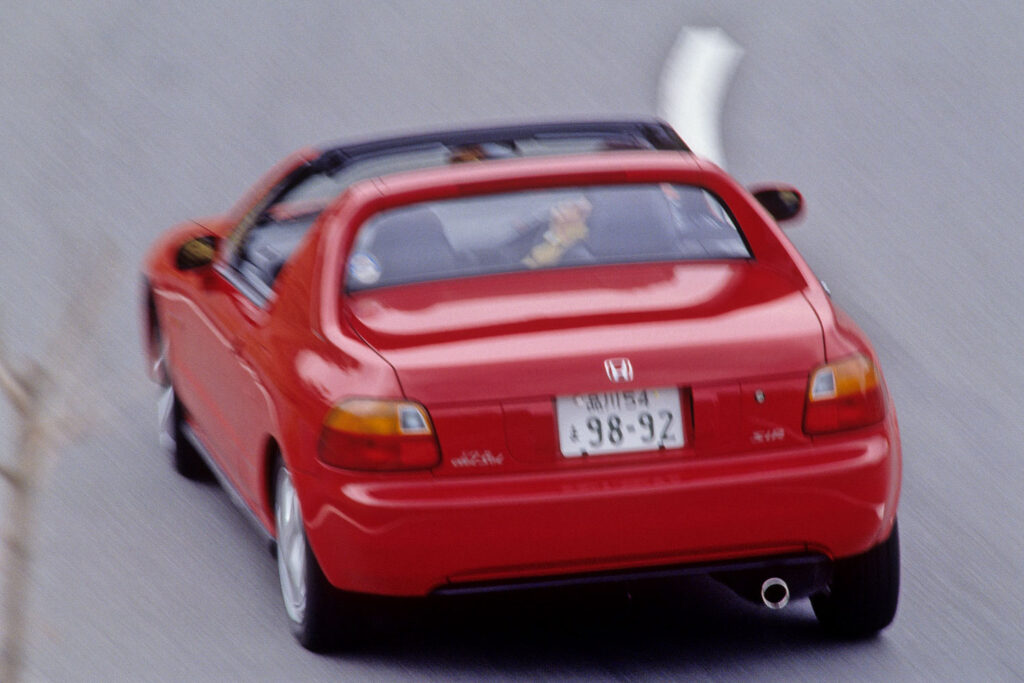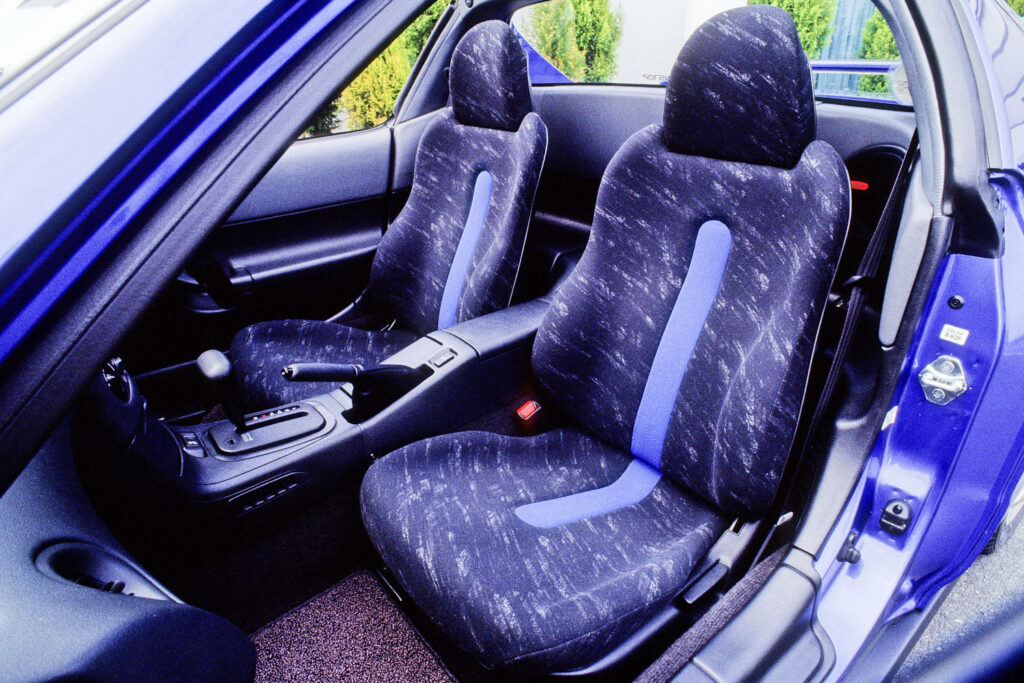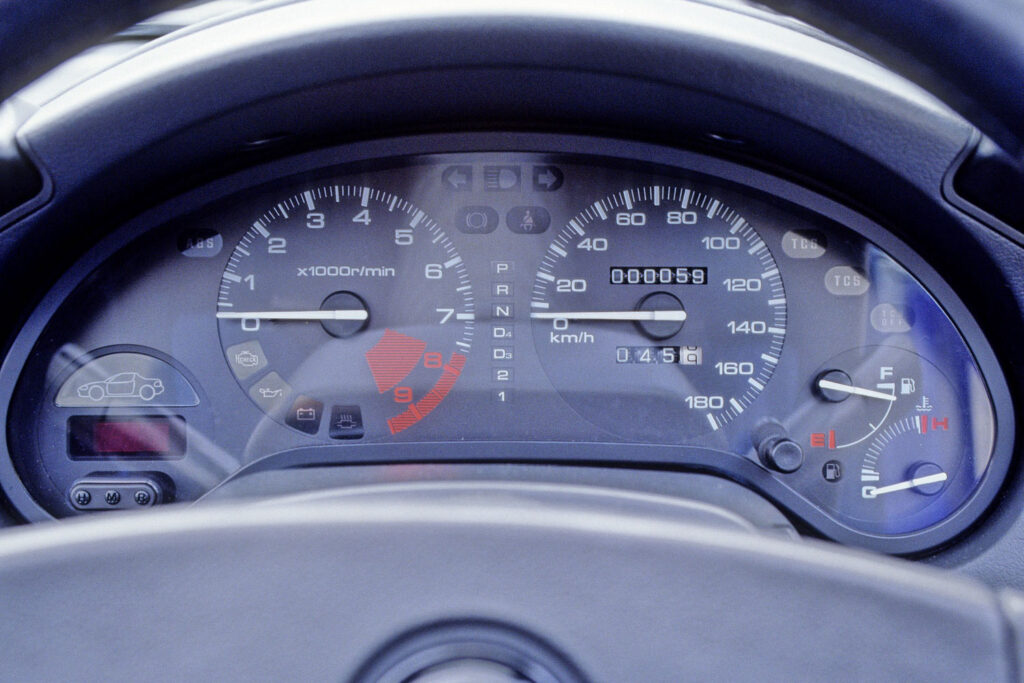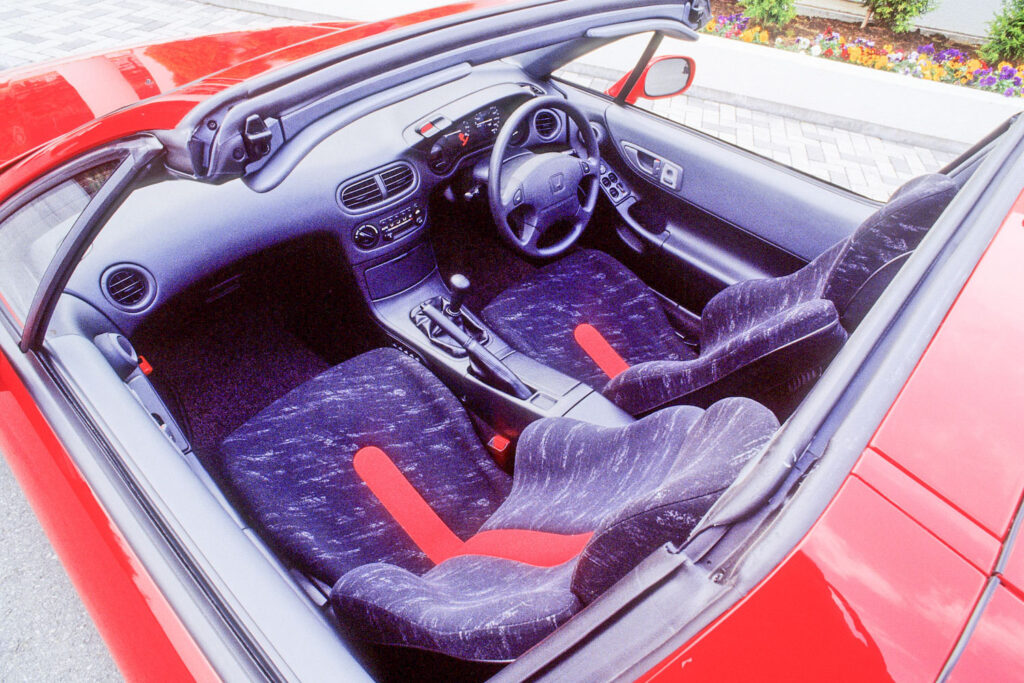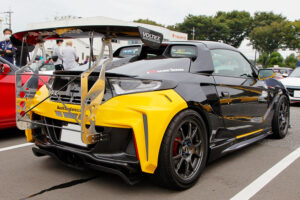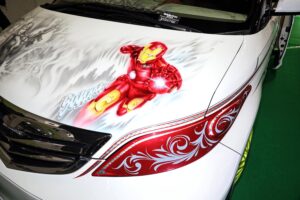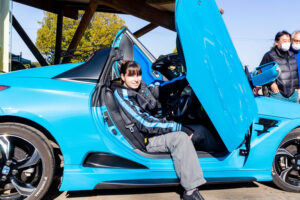The vehicle filled with the spirit of Honda
As for the CR-X models, the first and second generation of the CR-X have a strong impression of being FF sports cars with sharpness, characterized by their low silhouettes, and the Coda Tronca with its truncated rear. That is why many people lamented the introduction of an open-top model with the sub-name “delsol” at the same time as the complete model change to the third generation.
Electric Trans Top was characterized by its gimmicky operation
The second generation CR-X also had a glass-top version that was not suitable for sport driving, and this version accounted for the majority of sales. Therefore, the CR-X was steered in the direction that the users of the time demanded.
The most distinctive feature of the CR-X delsol is its retractable hard top. This was Honda’s answer to combining the fun of open-air driving with the weather resistance of a coupe.
The “electric Trans Top” version, which opens and closes the roof electrically, was characterized by its gimmicky movement. By unlocking the car and pressing and holding a button, the trunk lid was raised horizontally, from where an arm extended to insert the rear end into the tilting roof, which was then retracted into the trunk lid and lowered. It took about 45 seconds to open and close the trunk lid, which was not a very fast process, but it was a feature that Honda was very particular about.
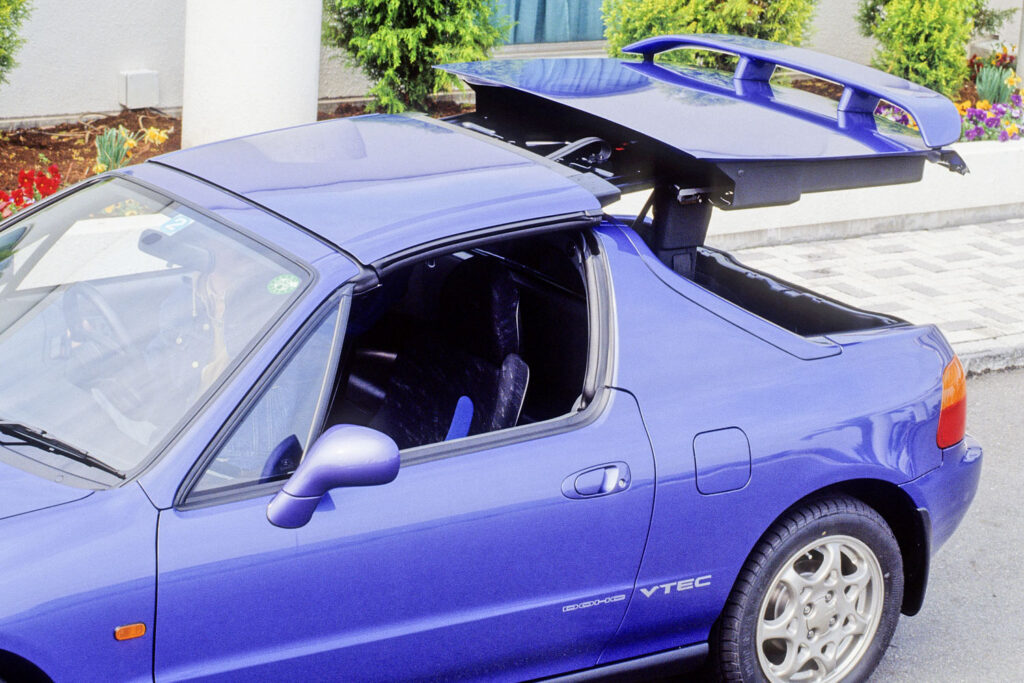
There was also a manual convertible roof that could be manually detached and the roof panel was stored in the trunk lid. This one was made of lightweight aluminum to accommodate the fact that it could be detached by hand, which was also typical of Honda.
A power rear window was adopted to enhance the sense of openness
In addition, the doors were fitted with quarter windows to reduce wind intrusion when driving with the top down, and a power window was used in the rear. This power rear window was also used in the S660.
The vehicle weight of the CR-X delsol reached 1200 kg in its heaviest version. As a pure sports car, this might have seemed insufficient. However, as the press release stated at the time, “There is a joy of sport that cannot be expressed in terms of power and speed. As the release stated at the time, this car was filled with Honda’s spirit of creating new values.






